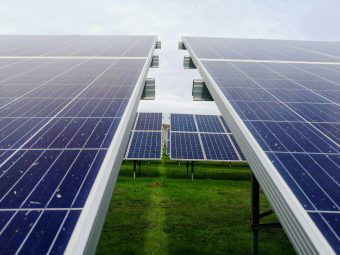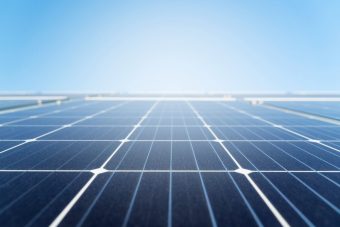
Renewable energy sources like solar are volatile, meaning there is not enough energy production to meet demand when the sun doesn’t shine.
However, when the sun does shine, solar panels can feed so much electricity into the grid that the electricity becomes worthless at market.
Virtual power plants – decentralized battery networks of sources such as EVs – can help achieve 100 percent renewable energy systems.
Moving from energy ‘prosumers’ to ‘flexumers’
Today’s renewables still work in a conventional setting. Homeowners – often dubbed ‘prosumers’ as they produce and consume energy – feed in the electricity from their solar panels into the grid when the sun shines or when their battery is fully charged.
These solar energy systems could with some justification be called ‘dumb’, just as an old mobile phone could take calls but was unable to do anything else prior to today’s smartphone era.
Instead, the future of solar must be smart and connected. Prosumers will give the floor to ‘flexumers’ that are integrated into the grid and can react to market signals.
Just as an autonomous vehicle can be updated remotely and have more and more features while the body of the car remains the same, the domestic solar energy system will look the same in terms of hardware, but its software will be much more powerful.
More:
- UN: Renewable Energy Creates a Safer Future
- Rostock: Regional Development With Wind Energy
- Key Enablers to Triple Renewables by 2030: Skills and Capacities
‘Sector coupling’ key to the future of solar energy
The ‘magic wand’ to make this happen is the so-called ‘sector coupling’ – merging the previously separate areas of electricity, heat and fuels. In the future, electricity will also be used for heat generation via heat pumps, as well as for charging electric vehicles (EVs) at home.
De-facto, an EV is a large battery on wheels. A medium-sized car battery, such as that of the Volkswagen ID3 in mid-range configuration, has a capacity of 62 kWh – equivalent to the amount of electricity a family in a single-family home consumes in 6-7 days (approximately 8-10 kWh per day).
By 2030, Germany alone aims to have 15 million electric cars on the road, and typically private cars remain unused for 23 hours a day.
This presents tremendous potential for using electric cars as mobile storage, intelligently-networked and controlled via smart energy management. Bi-directional charging, enabling power flow between the grid and EVs, is under way and will soon be usable.
Heat pumps are also a form of buffer storage: they heat water to provide heating and hot water.
The impact of a temperature difference of 1-2ºC in the supply temperature is negligible above a minimum threshold. If you adjust the operation of heat pumps to reduce usage during periods of expensive energy and maximize usage when energy is inexpensive, they can help stabilize fluctuations in renewable energy supply.
Creating a domestic decentralized battery network
Hundreds of thousands of home batteries, EVs and heat pumps are poised to connect into a vast, decentralized battery network – offering capacity akin to several nuclear power plants, but with unparalleled flexibility.
German renewables company Enpal is targeting a capacity exceeding one gigawatt by 2026, supported by a growing number of similar projects.
This networked battery, called a ‘virtual power plant’ (VPP), intelligently manages and aggregates electricity generation, storage and consumption from participating households, while also trading profitably on the electricity market.

For instance, it charges the storage or electric vehicle when electricity is very cheap or when the household solar panels generate surplus energy. Electricity is sold back to the grid when market prices are high due to low sunlight or wind.
This artificial intelligence (AI)-based platform enables homeowners to save significant costs and generate additional income. The smart integration into the energy market also paves the way for transitioning away from solar subsidies.
Virtual power plants can optimize energy operations
By optimizing operations in the intraday continuous market, VPPs simultaneously play a crucial role in relieving and better utilizing electricity grids.
They decentralize storage of surplus electricity when the grid is overloaded and inject electricity back into the grid as needed. This reduces peak loads, ensures a more even distribution of electricity generation and demand, and stabilizes electricity grids.
Source: World Economic Forum

